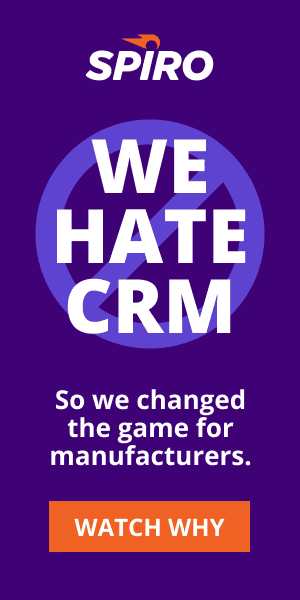Breaking Up With A Prospect Isn’t Hard To Do
You know the old saying “You can’t win them all”? Well, I don’t like it as much as the Yogi Berra (modified) quote that says “Sales is 90% mental. The other half is physical”.
Sales is a largely mental game, and nothing is more frustrating than realizing all your efforts are going to waste with a particular prospect or client. I’ve wanted to walk away from an interaction, tell the client a little about my frustration and even ask them why they are wasting my time. However, I’ve learned a better way to up my mental strategy.
We’ve already discussed in depth when to drop an opportunity. Now here is some advice on how to break up with a prospect.
What Not To Do
First things first, what not to do. When you are 99.9% positive that a client is just wasting your time, do not just check out and go silent. It’s easy to do this, especially when you’re so busy with your work and personal life.
You might be tempted to stop putting forth effort and allow the potential business to fizzle out. I mean, the customer will come around if they are interested, right? Wrong. People are busy and have other priorities besides responding to us. It is up to you to follow up and find the reason behind a hesitation so that when, and if, they are ready, they opt for your solution.
Another common response is to blame the client. You aren’t closing the deal so you start pointing the finger. They don’t understand the value of your product or service, or they can’t afford it. This again doesn’t do much good as you just can’t know that for sure.
Lastly, if a customer isn’t making the decision to buy, it can motivate you to double your efforts and push the sale on them. While you may think you’re showing off your sales skills, this is an almost guaranteed way to burn the bridge with them. Instead of unknowingly throwing features and benefits at the customer, find out why they are hesitating so you can address the issue directly.
Tell Your Prospects the Truth
Instead of avoidance, blame or being pushy, opt for calling it like it is. This way you can put all the cards on the table and gain honest feedback from the customer. This can be done by phone, email or in-person. Be sure to be genuine and polite, and simply state something along the lines of:
“I thought we had a really good meeting a few months back, but since then I’ve gotten the sense that you’re not that interested in hearing more.”
or
“I really like talking with you and your team, but if you’re not really going to be making a decision early next year, I need to focus on other opportunities.”
Each prospect will have their own reasons for hesitating, whether it is that they just don’t want to say no after stringing you along, or they have questions about price, suitability for their needs or some other factor. Regardless, this approach will address the fact that they are being indecisive, which prompts them to give you an explanation.
Perhaps they’ll agree with you, perhaps you’ll hear nothing, or perhaps they’ll say “oh, wait – I was in China on an emergency assignment, but now I’m ready to look deeply into your product.” No matter what, you’ll have a conclusion to the lead.
By holding this line of thinking in mind, you can put your energy into the customers who are truly interested and break up with those who aren’t. In doing so, you are working smarter, instead of harder. Like Yogi said, it’s a mental game. If you keep chasing loose ends, you’ll waste all your energy swinging at pitches that would have been fouls anyway. Grab hold of the situation and identify the good pitches. Then, you can hit home runs.

